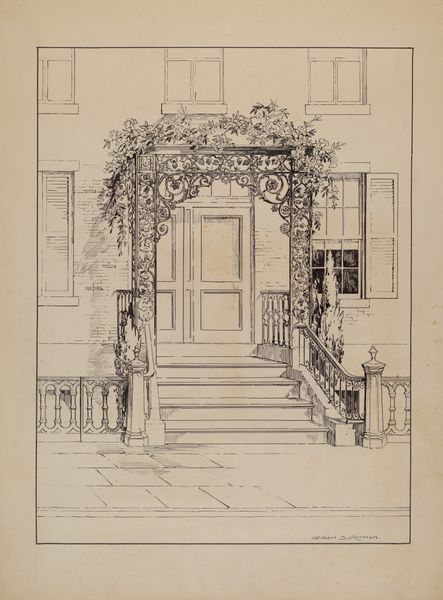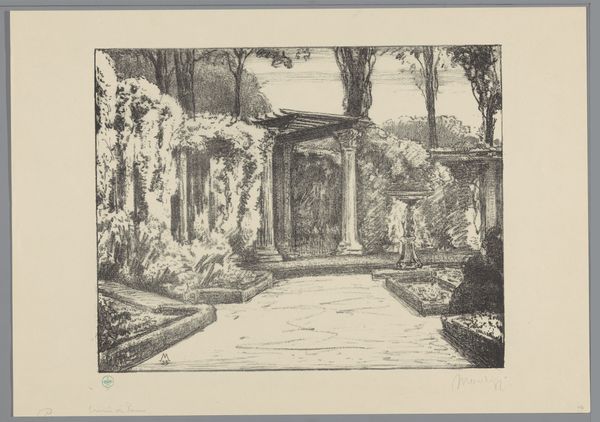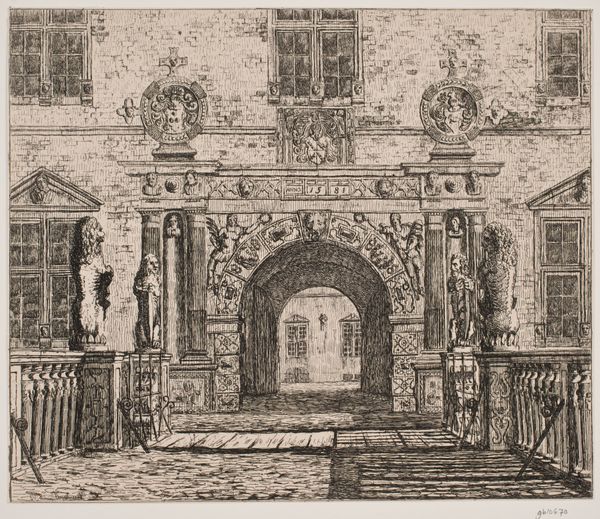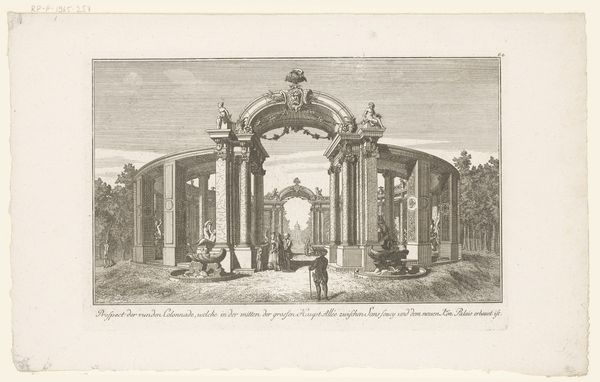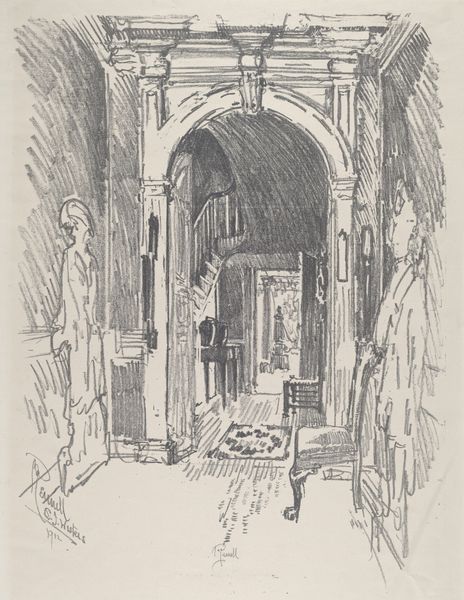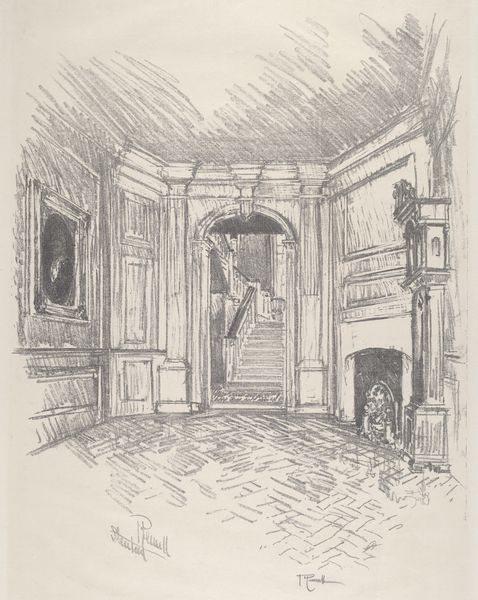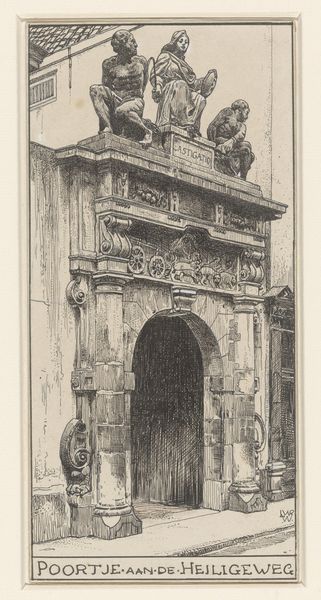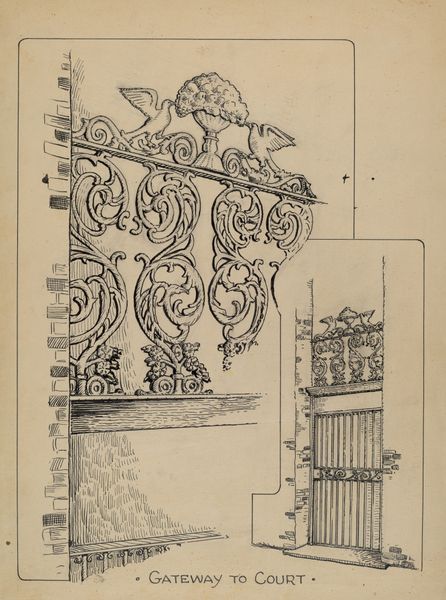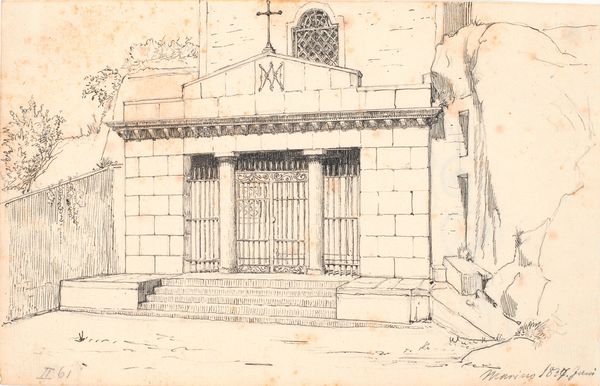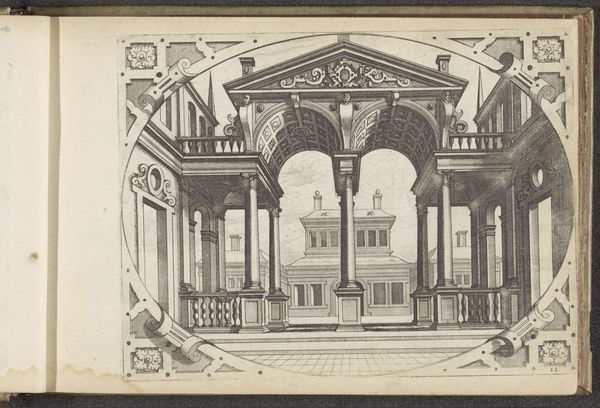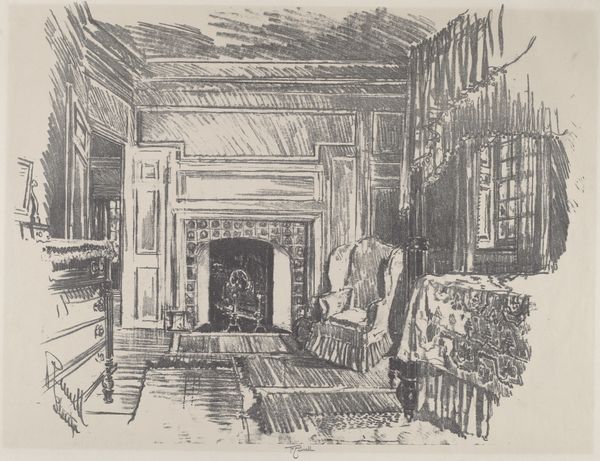
Copyright: National Gallery of Art: CC0 1.0
Editor: Here we have Joseph Pennell's 1912 etching, "Doorway, Wyck". The details in the brickwork are incredible and it creates a strong sense of depth, inviting you into the shaded doorway and beyond. What strikes you about this piece? Curator: What interests me immediately is the Arts and Crafts sensibility. This wasn't just about decoration. It's about the process. Think of the hand involved in creating this etching, the labor to print it and the wider cultural move to revalue craftmanship amidst the growth of industry. Do you see evidence of labor in the artwork? Editor: I think so. The clear impression of handcraft in the irregular textures in brick, the hand-drawn lines in the timber above the door suggests human imperfections rather than a perfectly uniform industrial product. Is that what you mean? Curator: Exactly. Now consider Wyck itself, a historic house and garden, the home to a family who championed the movement, displaying a counter narrative to mass produced materials of the industrialized world and its throwaway culture. In a way, it’s about resisting this commodification. Why use the etching process, instead of photography, for instance? Editor: Because etching inherently carries a relationship to craftmanship. The artist is not just recording an image, they're actively involved in the physical manipulation of the materials – the plate, the ink, the paper – so that it is almost elevating this doorway to be more significant. I see what you mean by rejecting throwaway culture... Thank you! Curator: The materiality, and the attention paid to process elevates what might otherwise be considered an ordinary image. That tension between subject and means, makes it an interesting commentary on value and labor.
Comments
No comments
Be the first to comment and join the conversation on the ultimate creative platform.
